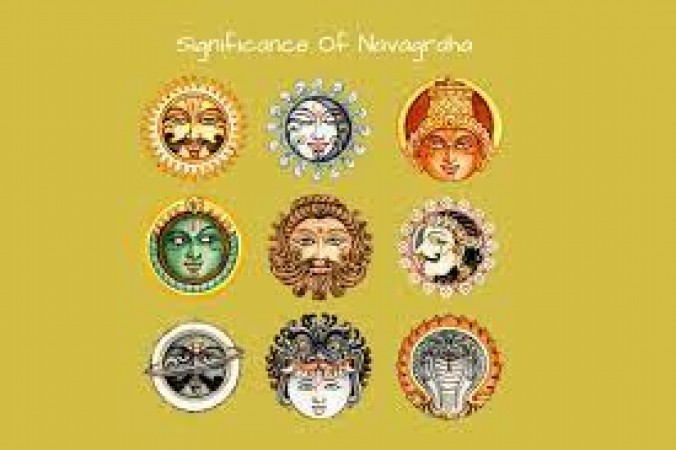
In the vast and intricate realm of Hindu cosmology, the Navagrahas stand as celestial influencers, governing the cosmic forces that shape human destiny. Rooted in ancient texts and enduring beliefs, these nine celestial bodies hold a prominent place in Vedic astrology and spiritual practices. This article delves into the origins, symbolism, and significance of the Navagrahas, shedding light on their role as guiding forces in the journey of life. The concept of Navagrahas finds its origins in Vedic scriptures, where the nine celestial deities are revered as manifestations of cosmic energies. These deities span across planetary bodies, including the Sun (Surya), Moon (Chandra), Mars (Mangal), Mercury (Budha), Jupiter (Guru), Venus (Shukra), Saturn (Shani), Rahu, and Ketu. Each Navagraha is believed to influence specific aspects of human existence, from health and wealth to intellect and spirituality.
The Navagrahas are often depicted in temples and art with unique attributes that symbolize their cosmic roles. Surya, the Sun, represents illumination and divine consciousness. Chandra, the Moon, signifies emotions and intuition. Guru, Jupiter, embodies knowledge and wisdom. Each planet's symbolism reflects its influence on various aspects of life, offering insights into the intricate interplay of cosmic energies. The Navagrahas play a pivotal role in Vedic astrology, known as Jyotish Shastra. Practitioners of this ancient science use the positions and movements of these celestial bodies to analyze and predict the course of individuals' lives. A person's birth chart, or horoscope, is a map of the heavens at the time of their birth, revealing the Navagrahas' influence on their destiny. Beyond astrology, the Navagrahas hold spiritual significance. Devotees seek their blessings and perform rituals to appease these deities and mitigate unfavorable influences. Temples dedicated to the Navagrahas are present across India, where rituals and prayers are conducted to seek their divine favor and protection. These practices are believed to harmonize cosmic energies and enhance overall well-being. The Navagrahas are associated with the law of karma, reflecting the idea that one's actions have consequences that can be influenced by celestial bodies. Remedial measures, such as wearing specific gemstones, reciting mantras, and performing rituals, are believed to balance or mitigate adverse planetary effects. These remedies aim to alleviate challenges and enhance positive energies.
The Navagrahas remind individuals of the intricate web connecting the microcosm (individual) to the macrocosm (universe). Their influences are a reminder of the dynamic interplay between free will and destiny. By understanding and aligning with these cosmic energies, seekers aim to navigate life's challenges and opportunities with greater awareness and resilience.
The Navagrahas' influence extends beyond individual beliefs, permeating cultural practices and artistic expressions. Temples and sculptures dedicated to these celestial deities adorn landscapes, reflecting the enduring cultural significance of their presence. Festivals and rituals celebrate their divine roles, fostering a sense of unity and reverence within communities. The Navagrahas, as celestial navigators of cosmic influence, hold a multifaceted place in Hindu beliefs. Rooted in Vedic scriptures and embedded in astrological practices, these nine deities guide individuals on a profound journey through life's intricate tapestry. As devotees engage with their symbolism and seek to harmonize cosmic energies, they embrace a deeper understanding of the interconnectedness of the universe and the pivotal role these celestial bodies play in shaping human destinies. The Navagrahas beckon humanity to explore the cosmos within and around them, as they navigate the cosmic dance of existence.
Also read - Ipoh: A Blend of Heritage, Nature, and Culinary Delights